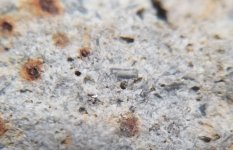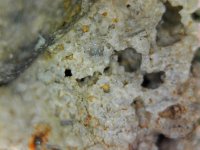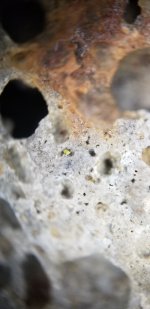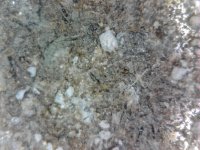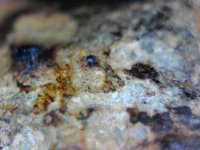artyfacts
Bronze Member
- May 1, 2010
- 1,140
- 1,234
- 🥇 Banner finds
- 3
- Detector(s) used
- Whites DFX, MX7, Minelab Manticore
- Primary Interest:
- All Treasure Hunting
This came out of the ground burying my pet back in 2005 or so. I thought it was a piece of concrete with iron in it until I turned it over and saw the holes and thought it was coral, almost threw it back in the hole. It sat on my back steps all these years. Not sure what it is. I purchased a 200x USB endoscope and found some very neat stuff that is not pictured. The pictures of what I presume is a crust are all very shiny or glassy, looking on an angle. There are many of these small patches on all sides ranging from black to rust, grey and clear, they look worn down by something. I'm not sure of the micro striations going through most of these glassy patches. The only thing I could find on these type of lines was twining but the spacing is irregular and it is only on the surface of these glassy sections. Another possibility is micro glacier striations, dont know. The striations all follow the same direction. The main mass is almost 6 inches long and tubular with a mass of rusty nodes with a bluish clump stuck to it. There are very bright metallic flakes and bright reflective metal that is oozing from the iron nodes. Most of the odd minerals have fracture lines going through them. If this gets any positive feedback I will upload more pics as there are some exciting minerals.
Attachments
Last edited:


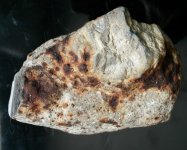
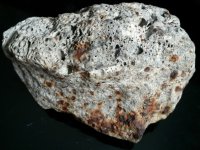
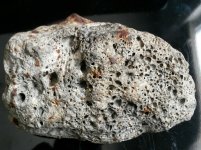
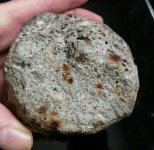
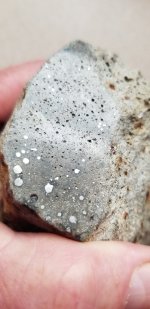
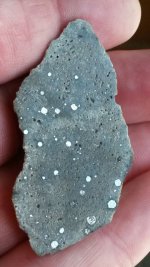
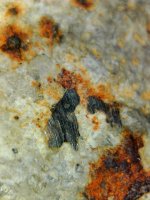
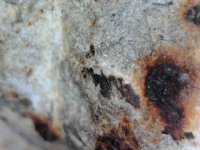
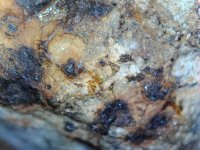
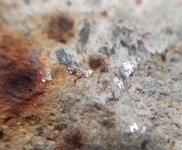
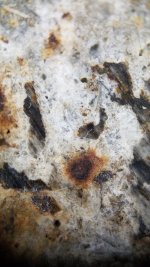
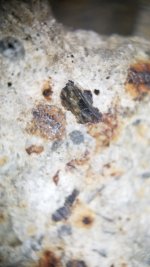
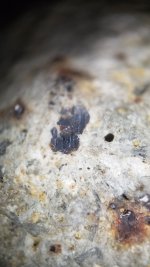
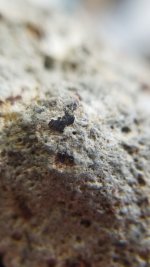
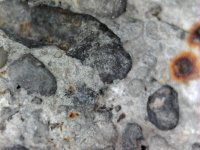
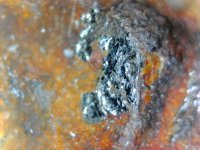
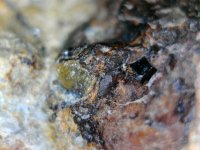
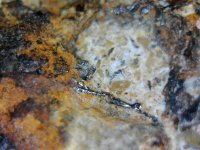
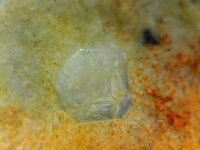
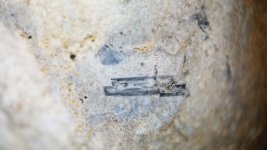
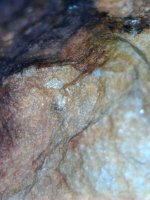
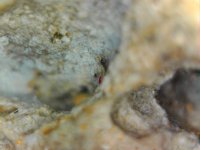
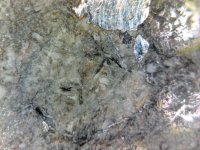
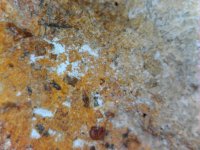
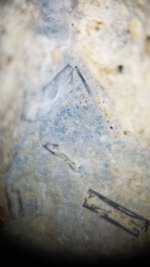
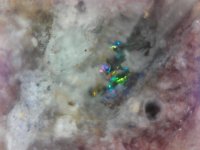
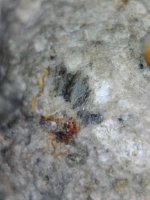
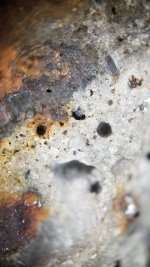

 ). I guess there truly is a sucker born every minute I just have to get it tested, off it goes. Who is the best? Please let me know. Its a win win situation, I will get to know for sure and at the same time I get to support the hard working Americans in the lab. This has truly been a gift tripping over this sucker in the sand pile in my backyard, I almost face planted. I haven't stopped reading and learning and looking at this melted rock for many, many days. No matter the outcome I have a new appreciation for rocks from everywhere now. Its been a great read and a wonderful learning lesson.
). I guess there truly is a sucker born every minute I just have to get it tested, off it goes. Who is the best? Please let me know. Its a win win situation, I will get to know for sure and at the same time I get to support the hard working Americans in the lab. This has truly been a gift tripping over this sucker in the sand pile in my backyard, I almost face planted. I haven't stopped reading and learning and looking at this melted rock for many, many days. No matter the outcome I have a new appreciation for rocks from everywhere now. Its been a great read and a wonderful learning lesson.